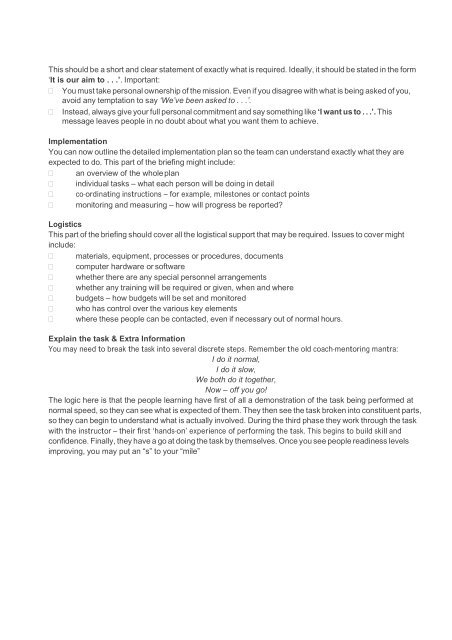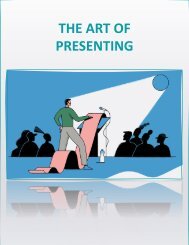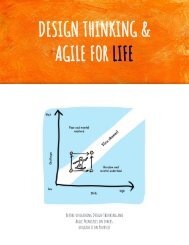2020 iLEAD e-book
- No tags were found...
Create successful ePaper yourself
Turn your PDF publications into a flip-book with our unique Google optimized e-Paper software.
This should be a short and clear statement of exactly what is required. Ideally, it should be stated in the form<br />
‘It is our aim to . . .’. Important:<br />
You must take personal ownership of the mission. Even if you disagree with what is being asked of you,<br />
avoid any temptation to say ‘We’ve been asked to . . .’.<br />
Instead, always give your full personal commitment and say something like ‘I want us to . . .’. This<br />
message leaves people in no doubt about what you want them to achieve.<br />
Implementation<br />
You can now outline the detailed implementation plan so the team can understand exactly what they are<br />
expected to do. This part of the briefing might include:<br />
an overview of the whole plan<br />
individual tasks – what each person will be doing in detail<br />
co- ‐ordinating instructions – for example, milestones or contact points<br />
monitoring and measuring – how will progress be reported?<br />
Logistics<br />
This part of the briefing should cover all the logistical support that may be required. Issues to cover might<br />
include:<br />
materials, equipment, processes or procedures, documents<br />
computer hardware or software<br />
whether there are any special personnel arrangements<br />
whether any training will be required or given, when and where<br />
budgets – how budgets will be set and monitored<br />
who has control over the various key elements<br />
where these people can be contacted, even if necessary out of normal hours.<br />
Explain the task & Extra Information<br />
You may need to break the task into several discrete steps. Remember the old coach- ‐mentoring mantra:<br />
I do it normal,<br />
I do it slow,<br />
We both do it together,<br />
Now – off you go!<br />
The logic here is that the people learning have first of all a demonstration of the task being performed at<br />
normal speed, so they can see what is expected of them. They then see the task broken into constituent parts,<br />
so they can begin to understand what is actually involved. During the third phase they work through the task<br />
with the instructor – their first ‘hands-‐on’ experience of performing the task. This begins to build skill and<br />
confidence. Finally, they have a go at doing the task by themselves. Once you see people readiness levels<br />
improving, you may put an “s” to your “mile”

















